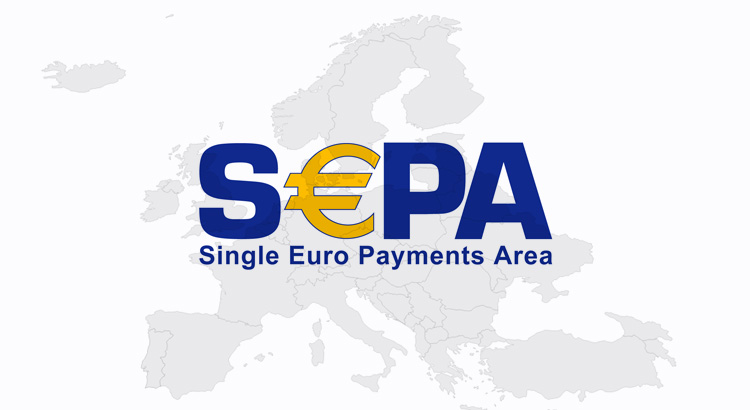One of the most important integration processes carried out in the European Union has been the Single Euro Payments Area. Since its entry into force on 1 February 2014, both financial systems and customers have benefited from making or receiving payments, which has contributed to eliminate cross-border complications and simplify bank transfers in euros.
To find out exactly what the SEPA area consists of, as well as which countries are part of it, we invite you to read on.
SEPA: what is it?
SEPA is the area where individuals and companies can make or receive payments in euros. These financial processes are carried out under identical conditions for all the countries belonging to the European Union. This means that all economic entities exercise the same obligations and rights, regardless of the nation to which they belong.
If you are wondering what SEPA stands for, you should know that the acronym derives from Single Euro Payments Area.
In this way, the area makes it possible to speed up the work of people and companies that carry out intra-community transactions.
SEPA: its main goal
In addition to knowing what SEPA is, it is important that you know its purpose. The area, created for all SEPA countries, is governed by a set of uniform procedures and rules. This guarantees security, ease, speed and efficiency in making and receiving payments between the different national markets. This has resulted in a more innovative, dynamic and competitive financial scenario. Gone are the days when bureaucracy was needed to make international payments or transfers.
Harmonisation in cross-border payment rules has had a positive impact on payment instruments such as transfers, debit and credit cards and direct debit orders.
The aim of SEPA is to improve the efficiency of cross-border transfers and create a single domestic market for euro payments.
SEPA: its great advantages
Among the benefits offered by the SEPA zone, you will find the following:
- Transfers between financial institutions receive the same treatment as any national transfer. These are carried out efficiently thanks to the BIC (Bank Identifier Code) and IBAN (International Bank Account Number) codes.
- The area guarantees the effectiveness of the transactions carried out between financial institutions and customers in the different countries that make up the area.
- The financial operations are agile, comfortable, and null or very low cost.
Freedom and security regarding payments and collections: payment of payrolls, pensions, punctual payments, use of cards to pay and to dispose of cash.
SEPA countries
Today, there are 36 members in the SEPA area, consisting of the 28 member states of the European Union (the United Kingdom is provisionally considered a state member until 31 December 2020), plus Iceland, Liechtenstein, Norway, Switzerland, Andorra, Monaco, San Marino and the Vatican City.
Out of these 36 SEPA countries, only 19 are part of the euro area, also known as the “eurozone”, that is, countries that have replaced their national currencies with the single currency, the euro.
- Andorra
- Austria
- Belgium
- Cyprus
- Estonia
- Finland (including Aland Islands)
- France (including French Guiana, Guadeloupe, Martinique, Mayotte, Saint Barthélemy, Saint Martin (French part), Réunion and Saint Pierre and Miquelon)
- Germany
- Greece
- Ireland
- Italy
- Latvia
- Lithuania
- Luxembourg
- Malta
- Monaco (Monaco and San Marino have bilateral agreements with the EU to use the euro as their official currency)
- Netherlands
- Portugal (including Azores and Madeira)
- San Marino (Monaco and San Marino have bilateral agreements with the EU to use the euro as their official currency)
- Slovakia
- Slovenia
- Spain (including Canary Islands and Ceuta en Melilla)
Non euro SEPA countries
- Bulgaria
- Croatia
- Czech Republic
- Denmark
- Hungary
- Iceland
- Liechtenstein
- Norway
- Poland
- Romania
- Sweden
- Switzerland
- United Kingdom (including Gibraltar)
Truust can operate in the following countries
Truust platform can carry out SEPA payments within the 29 eurozone countries plus the SEPA countries and territories using euro.
- AD Andorra
- AT Austria
- BE Belgium
- CY Cyprus
- EE Estonia
- FI Finland
- AX Åland Islands
- FR France
- GF French Guiana
- GP Guadelope
- MQ Martinique
- YT Mayotte
- RE Réunion
- PM Saint Pierre and Miquelon
- DE Germany
- GR Greece
- IE Ireland
- IT Italy
- LV Latvia
- LT Lithuania
- LU Luxembourg
- MT Malta
- MC Monaco
- NL Netherlands
- PT Portugal
- SM San Marino
- SK Slovakia
- SI Slovenia
- ES Spain

